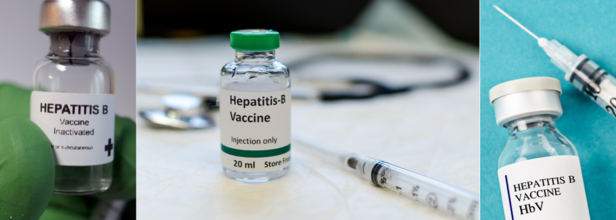- Health Conditions A-Z
- Health & Wellness
- Nutrition
- Fitness
- Health News
- Ayurveda
- Videos
- Medicine A-Z
- Parenting
- Web Stories
Amy Schumer Shares Her Cushing Syndrome Journey: What Happens When Stress Hormones Take Over

Amy Schumer (Credit: Canva/X)
Comedian and actress Amy Schumer said she wouldn't have known she was suffering from Cushing Syndrome if it wasn't for the internet trolls. Speaking on her podcast, the 43-year-old shared that harsh comments about her swollen face initially seemed like unwarranted criticism. However, it prompted her to get a diagnosis wherein she found that she had what is known as 'Moon Face'— a symptom of Cushing Syndrome.
"A year ago, the internet came for me. At first, I was like. Okay, everybody, relax. However, things took a serious turn when medical professionals started weighing in. The doctor said, "Something's up. Your face looks different." It was then that they discovered that the swelling on her face wasn't normal. She was suffering from Moon face. A medical condition wherein the face appears round and swollen due to fat deposits (moon facies) on the sides of the face.
What Caused It?
Schumer said that the increased level of stress in her body was due to steroid injections she had been receiving to treat scars from her breast reduction and cesarean section. "It gave me this thing called Cushing syndrome, which I wouldn't have known about if the internet hadn't come for me so hard," she said. Schumer also shared that her Cushing syndrome has since resolved, as the condition often improves once the steroid treatments are discontinued.
What Is Cushing Syndrome?
Cushing's syndrome is a disorder that occurs when your body makes too much Cortisol for a prolonged period of time. Cortisol (also known as stress hormone) is produced by adrenal glands, which are located on the top of both kidneys. It is basically a glucocorticoid hormone, which implies that it fights inflammation, autoimmune diseases, and cancer. Almost all tissues in your body have glucocorticoid receptors and this hormone affects nearly every organ in your system.
Here's What Cortisol Does To Your Body?
Regulates body's stress response: During times of stress, your body can release cortisol after releasing its "fight or flight" hormones, such as adrenaline, so you continue to stay on high alert. In addition, cortisol triggers the release of glucose (sugar) from your liver for fast energy during times of stress.
Regulating Metabolism: Cortisol helps control how your body uses fats, proteins and carbohydrates for energy.
Suppressing Inflammation: In short spurts, cortisol can boost your immunity by limiting inflammation. However, if you have consistently high levels of cortisol, your body can get used to having too much cortisol in your blood, which can lead to inflammation and a weakened immune system.
Regulate Blood Pressure: The exact way in which cortisol regulates blood pressure in humans is unclear. However, elevated levels of cortisol can cause high blood pressure, and lower-than-normal levels of cortisol can cause low blood pressure.
Increase And Regulate Blood Sugar: Under normal circumstances, cortisol counterbalances the effect of insulin, a hormone your pancreas makes to regulate your blood sugar. Cortisol raises blood sugar by releasing stored glucose, while insulin lowers blood sugar. Having chronically high cortisol levels can lead to persistent high blood sugar (hyperglycemia). This can cause Type 2 diabetes.
Helps Control Sleep-Wake Cycle: Under regular circumstances, you have lower cortisol levels in the evening when you go to sleep and peak levels in the morning right before you wake up. This suggests that cortisol plays a significant role in the initiation of wakefulness and plays a part in your body’s circadian rhythm.
Optimum cortisol levels are necessary for life and for maintaining several bodily functions. If you have consistently high or low cortisol levels, it can have negative impacts on your overall health.
How Is Level of Cortisol Controlled?
The amount of cortisol secreted in your body is controlled by Hypothalamus and Pituitary gland. When the levels of cortisol in your blood fall, your hypothalamus releases corticotropin-releasing hormone (CRH), which directs your pituitary gland to produce adrenocorticotropic hormone (ACTH). ACTH then stimulates your adrenal glands to produce and release cortisol. If cortisol is produced in excess, then it triggers Cushing Syndrome.
Coles Recalls Peanut Butter Products After Cancer-causing Toxins Were Found

Credits: Canva
Food Standards Australia New Zealand is urging people to not consume two peanut butter products by Coles. These two varieties are Coles Smooth peanut butter and Coles Crunchy peanut butter, which have been found to contain mycotoxin and aflatoxin. Coles has also recalled these two products. The question is raised for products with the batch marked best before February 5, 2027.
Coles' recalling means that people can return these products for a full refund.
The toxins found in these products are said to increase the risk of liver cancer. An alert has been issued, which reads: “Coles Online customers can receive a refund or credit by contacting Coles Online Customer Care on 1800 455 400. Any consumers concerned about their health should seek medical advice.”
What Are These Toxins, How Does It Impact Our Health?
Mycotoxins
As per the World Health Organization (WHO), mycotoxins are toxic substances produced naturally by certain types of mould (fungi). These moulds can grow on a wide variety of foods—such as grains, dried fruits, nuts, and spices—especially in warm, damp, and humid environments. The contamination can occur either before harvest or after, during storage or even on the food itself. Alarmingly, most mycotoxins are highly stable and can survive food processing methods.
There are hundreds of known mycotoxins, but a few pose significant health risks to both humans and animals. These include aflatoxins, ochratoxin A, patulin, fumonisins, zearalenone, and nivalenol/deoxynivalenol. Mycotoxins enter the food chain when crops are infected with mould. People can be exposed either by consuming contaminated food directly or indirectly—most commonly through animal products like milk, when livestock are fed mould-contaminated feed.
Where Are They Found?
Mycotoxins can contaminate food before harvest (in the field) or afterward during storage and processing. Since most mycotoxins are chemically stable, they can survive food manufacturing and cooking processes, making them hard to eliminate completely.
Mycotoxins can pose serious health risks to both humans and animals. Their effects can range from sudden poisoning to long-term health issues such as:
- Suppressed immune response
- Liver damage
- Increased cancer risk
Livestock can also be exposed through contaminated feed, and humans may indirectly consume these toxins through animal products like milk.
Common Mycotoxins to Watch For
Though hundreds of mycotoxins have been identified, a few are especially harmful and frequently found in food:
- Aflatoxins (among the most toxic, produced by Aspergillus moulds found in soil and stored grains)
- Ochratoxin A
- Patulin
- Fumonisins
- Zearalenone
- Nivalenol/Deoxynivalenol (DON)
What Are Aflatoxins?
As per the National Cancer Institute, US, aflatoxins are a group of toxic compounds produced by specific types of fungi, primarily Aspergillus flavus and Aspergillus parasiticus. These fungi thrive in warm, humid climates and commonly infect crops like maize (corn), peanuts, cottonseed, and various tree nuts. Contamination can occur at multiple stages—while the crops are growing in the field, during harvest, or later in storage.
The National Cancer Institute also notes that exposure to aflatoxins is associated with an increased risk of liver cancer.
Another 2013 study published in World Journal of Gastroenterology notes that while Hepatocellular carcinoma (HCC) is one of the leading causes of cancer deaths worldwide, it is caused by aflatoxin. The study notes that aflatoxin is a food contaminant produced by the fungi Aspergillus flavus and Aspergillus parasiticus, is a known human carcinogen that has been shown to be a causative agent in the pathogenesis of HCC. In fact, Aflatoxin B1 has been classified by the WHO as a “group A” carcinogen because of it’s proven contribution to the pathogenesis of HCC.
Hepatitis B Nears Elimination In Uzbek Children After Years Of Immunization

Credits: Canva
In 2001, Uzbekistan was far from a model of public health. The country was grappling with high hepatitis B infection rates and a fragmented healthcare system, few would have predicted that it would one day be celebrated for near elimination of the disease in children.
Yet today, reports Gavi, The Vaccine Alliance, the country stands among just nine in the World Health Organization (WHO) European region to meet hepatitis B control targets. A recent nationwide survey revealed that only 0.2% of Uzbek children carry the hepatitis B surface antigen (HBsAg)—well below WHO’s 0.5% threshold.
What is Hepatitis B and Why It’s Dangerous
Hepatitis B is a viral infection that affects the liver. While some infections are brief and symptom-free, others can become chronic, quietly progressing over years to cause liver failure or cancer. The risk of chronic infection is especially high in infants whose immune systems are still developing.
Fortunately, the hepatitis B vaccine is highly effective, offering 98–100% protection after a full three-dose series. WHO recommends that all infants receive the first dose within 24 hours of birth, followed by two or more doses at spaced intervals.
What Are Gavi Countries?
Gavi supports lower-income and transitioning middle-income countries to strengthen immunisation systems and increase vaccine access. Countries that receive support are commonly referred to as “Gavi countries.”
Uzbekistan introduced universal hepatitis B vaccination in October 2001, supported by US$4.5 million in funding from Gavi, the Vaccine Alliance.
From 2001 to 2008, Uzbekistan provided the hepatitis B birth dose followed by two additional doses.
In 2009, the country upgraded to the pentavalent vaccine—offering protection against hepatitis B, diphtheria, tetanus, pertussis, and Haemophilus influenzae type B—while still delivering a standalone birth dose. Gavi extended further funding of US$32 million for the next decade.
Also Read: Healers, But Human Too: The Quiet Burdens Our Doctors Carry
Vaccination coverage has remained impressively high—above 95% since 2002. However, until recently, the real-world impact of the programme on hepatitis B infection rates had not been comprehensively measured.
Proof of Progress In Uzbekistan’s Healthcare
In 2022, a team led by Dr Nino Khetsuriani from the U.S. Centers for Disease Control and Prevention (CDC), along with local researchers, conducted a nationwide survey.
They tested blood samples from 3,753 children in grades one to three and reviewed their immunisation records. Their findings, published in Vaccine, showed that just 0.2% of the children tested positive for HBsAg—proof of the vaccine’s long-term effectiveness.
With consistently high coverage, experts expect the burden of hepatitis B in Uzbekistan to decline further as vaccinated children grow into adulthood, replacing older, unvaccinated cohorts.
Uzbekistan graduated from Gavi’s financial support in 2022. Today, its national immunization programme is fully self-funded and regarded as one of the most efficient in the region.
“Uzbekistan stands as a model of excellence in immunization,” said Jan-Christopher Castilhos França, Gavi’s Senior Country Manager for Middle-Income Countries.
Top Court Rejects Censorship Appeal Filed By HHS Secretary RFK Jr. on Anti-Vaccine Posts

Credits: Alex Brandon
On June 30, the U.S. Supreme Court declined to hear a lawsuit filed by Children’s Health Defense (CHD), an anti-vaccine group founded by Robert F. Kennedy Jr., now the Secretary of Health and Human Services under the Trump administration.
The group alleged that its First and Fifth Amendment rights were violated when Meta Platforms—parent company of Facebook and Instagram—restricted its content related to vaccine misinformation during the COVID-19 pandemic.
Without providing comment, the Supreme Court left in place a series of lower court rulings that dismissed CHD’s claims. These rulings found that Meta acted independently and could not be treated as a government actor bound by constitutional free speech protections.
Lawsuit Stemmed From Facebook’s 2022 Removal of CHD’s Page
The legal dispute centered around Facebook’s removal of CHD’s page in 2022, amid efforts to combat vaccine misinformation during the pandemic. CHD claimed Meta’s actions were a result of coordination with the federal government as part of the CDC’s “Vaccinate with Confidence” campaign—an initiative encouraging platforms to promote accurate health information.
The group’s lawsuit was filed under the First and Fifth Amendments and other laws, arguing that Meta effectively carried out government censorship by restricting CHD’s content. However, courts repeatedly found no substantial evidence of collusion between Meta and the federal government.
Lower Courts: Meta Is Not a State Actor
The San Francisco-based 9th U.S. Circuit Court of Appeals, among others, ruled that Meta, as a private company, is not a "state actor" and is therefore free to determine what content appears on its platforms. The court also observed that Meta and the federal government were not always aligned in their objectives or actions.
While the CDC encouraged accurate vaccine messaging, the 9th Circuit noted there was no direct government control or coercion over Meta’s decisions. This distinction was critical in rejecting CHD’s claim that Meta was acting as an agent of the state.
Dissent Raises Concern Over Platform Power
Despite the unanimous rulings, one appeals judge issued a dissent, suggesting that Meta may still warrant First Amendment scrutiny due to the sweeping influence it holds over public discourse. The judge argued that when a platform controls speech at such a vast scale, its role begins to resemble that of a government actor—especially when supported by government policy, even if not outright directed by it.
Part of a Broader Pattern
The rejection follows a similar 2024 Supreme Court ruling, in which justices said Louisiana, Missouri, and other Republican-led states lacked legal standing to sue the Biden administration over alleged censorship of conservative content on social media. These decisions reflect a cautious judicial stance on intervening in disputes over online content moderation, especially in the absence of clear evidence of government overreach.
A Continuing Free Speech Debate in the Digital Age
While Meta has prevailed legally, the case leaves unresolved broader questions about the relationship between government agencies and tech companies—and how far platforms can or should go in moderating content related to public health or politics.
As misinformation continues to be a major concern and social media remains central to public discourse, the debate over where free speech ends and platform responsibility begins is far from over.
© 2024 Bennett, Coleman & Company Limited

